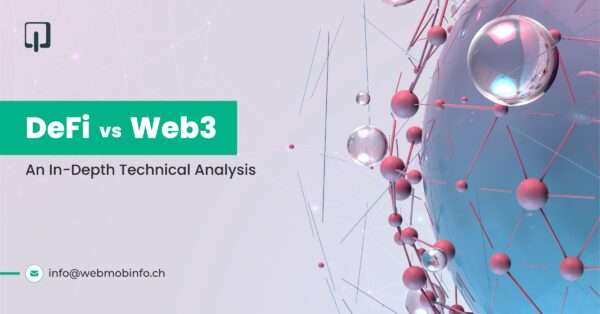Before the introduction of Web2, websites were static pages designed solely for reading. Interactivity was limited, and users could only scroll and read without the ability to write or engage with the site’s content.
But things took a turn when Mr Tim O’Reilly and Dale Dougherty coined the term Web 2.0 at a conference in 2004. With the second version of the web, we transitioned from static pages to dynamic and interactive web applications. This era witnessed the dawn of social media platforms, user-generated content, and web-based communities. At that time, Web2 was nothing less than a revolution of the internet. Still, today, in 2024, it has transformed into a centralized entity where every activity of yours is tracked & monitored by global IT giants.
This centralized structure of Web2 demanded a next-generation internet where you, the user, are in control. A place where things work more openly and fairly and where your privacy is valued. This was Web3.
TABLE OF CONTENT
In an era marked by privacy, decentralization, and transparency, Web3 offers.
Before proceeding further, let’s have a look at the market cap of Web3:
1. The market valuation is projected to reach USD 5,627.60 million by 2024.
2. Web 3.0’s market cap sits at $27.5 billion as of the latest available data.
3. In the first half of 2022, Web3 companies raised more than $1.8 billion.
4. The Web3 blockchain market was worth $1.23 billion in 2020.
5. Approximately 46% of finance apps are based on Web3 technology.
So, what makes Web3 so unique?
Well, here are the reasons behind Web3’s uniqueness:
- Decentralization: Web3 rejects the rulebook of centralized control. Instead of relying on tech giants like Google or Facebook, it leverages blockchain technology to distribute power across a network of computers. This eliminates single points of failure and empowers users.
- User Ownership: In Web2, you’re essentially a tenant on a platform you don’t own. Web3 flips the script, giving you ownership of your data and digital assets. Imagine owning your social media profile or the content you create online!
- Transparency: Web3 transactions are etched onto blockchains, publicly verifiable ledgers that ensure complete transparency. You can see exactly where your data goes and how it’s used.
Web3 Technology Powering the Future
Now that you know what Web3 is, let’s see what fuels the engine of Web3.
- Blockchain: Web3’s core lies in blockchain, as distributed ledgers store data securely and are tamper-proof. Think of it as a giant, immutable network that anyone can access.
- Smart Contracts: These are self-executing agreements written in code that automate tasks & transitions on the blockchain, eliminating the need for intermediaries.
- Cryptocurrencies: Digital assets like Bitcoin or Ether are native to the blockchain ecosystem and can be used for transactions in the Web3 network.
What is DeFi?
The idea of web3 lies in the decentralization of the Internet. Similarly, the Decentralized Finance or DeFi is a financial system that eradicates the function of intermediaries like banks & NBFCs. Through DeFi, you can directly participate in a transaction facilitated by blockchain technology.
Decentralized Finance is part of Web3, and its sole focus is creating a more transparent and secure financial ecosystem. Since its introduction, DeFi has gained massive popularity among users, shifting their focus from the traditional financial ecosystem.
Before proceeding further, let’s have a look at the market cap of DeFi:
- DeFi Crypto Market Cap: The DeFi crypto market cap is $90,328,600,132.98, with a total trading volume of $3,570,534,270.40 in the last 24 hours.
- Ethereum’s Dominance: Ethereum-based protocols account for over 90% of the total TVL in DeFi
- Market Cap of Governance Tokens: The total market cap of governance tokens in the DeFi ecosystem is over $100 billion.
So, how does DeFi differ from traditional finance?
Here’s How:
- No Middle-Man: DeFi eliminates the need for banks and other financial institutions as intermediaries. Blockchain-to-peer interactions allow you to access financial services like borrowing, lending, and trading.
- Permissionless Access: Unlike traditional finance, DeFi is open to anyone with an internet connection. There are no credit checks or geographical restrictions—just you and the power of the blockchain.
- Innovation at Breakneck Speed: DeFi is a hotbed for innovation. Developers are constantly creating new applications and protocols, pushing the boundaries of what’s possible in the financial world.
With DeFi applications aiming to be open source, permissionless, and completely transparent;
Here are some core components of DeFi:
- Decentralized Exchanges (DEXs): These innovative decentralized exchanges solutions allow users to trade cryptocurrencies/ DeFi tokens directly with each other, opting out from centralized exchanges.
- Borrowing & Lending Platforms: DeFi offers alternative solutions for borrowing and lending, often with more competitive interest rates than traditional institutions.
- Yield Farming: A new-age technique that involves locking up your crypto assets in DeFi protocols to earn rewards. However, it comes with inherent risks, so proceed with caution!
- Decentralized Insurance: DeFi is giving way to peer-to-peer insurance solutions, which offer potentially more affordable and transparent coverage.
DeFi vs Web3: Understanding the Key Difference
| Aspect | Web3 | DeFi |
| Definition | The next evolution of the internet focuses on decentralization, user ownership, and blockchain technology. | A subset of Web3 that focuses on recreating traditional financial systems using blockchain technology. |
| Core Components | Decentralization: Distributed control across peer-to-peer networks. Blockchain: A foundational technology for secure and transparent transactions. Smart Contracts: Self-executing contracts with code-defined rules. Tokenization: Digital representation of assets and data. | Decentralized Exchanges (DEXs): Platforms for peer-to-peer trading of cryptocurrencies. Lending Platforms: Services enabling users to lend and borrow assets. Stablecoins: Cryptocurrencies pegged to stable assets like fiat currency. Yield Farming: Earning rewards by providing liquidity to DeFi protocols. |
| Objectives | Decentralize the internet: Shift control from centralized entities to users. User control over data: Users own and manage their data. Enhance privacy: Minimise data exposure and tracking. Promote transparency: Open and transparent processes and transactions. | Decentralize financial services: Remove the need for traditional banks and financial intermediaries. Increase accessibility: Make financial services available to anyone with an internet connection. Enhance efficiency and transparency: Streamline financial processes and ensure transparent operations. Eliminate intermediaries: Reduce costs and increase efficiency by removing mediators. |
| Technology and Infrastructure | Blockchain for web applications: Utilises blockchain for various online activities beyond finance. Interoperability: Promotes seamless interaction between different blockchain networks. Applications: These include social media, digital identity verification, decentralized data storage, and more. | Blockchain for financial applications: Specifically uses blockchain to recreate and improve financial systems. Examples: Ethereum and other blockchain platforms that support smart contracts and DeFi protocols. Applications: Focuses on financial services such as trading (DEXs), lending and borrowing (DeFi platforms), creating stable cryptocurrencies (stablecoins), and optimising returns (yield farming). |
| Examples | Decentralized Social Media: Platforms like Mastodon or Minds that allow users to control their data. Decentralized Data Storage: Solutions like IPFS and Filecoin provide decentralised file storage. Digital Identity Systems: Projects like uPort and Sovrin that offer user-controlled digital identities. | Uniswap (DEX): A decentralized exchange for trading cryptocurrencies directly between users. Compound (Lending): A platform where users can lend their crypto assets and earn interest. DAI (Stablecoin): A stable cryptocurrency pegged to the US dollar. Yearn—finance (Yield Farming): A protocol that automates the process of yield farming to maximise returns. |
The Future of DeFi in Web3
Despite having different functionality, DeFi and Web3 are two sides of the same coin. The core idea lies in decentralization, where your data isn’t in the hands of a centralized entity.
A future where a farmer from a remote area obtains loans or earns interest on savings directly via a smartphone eliminates the necessity for a physical bank branch. Furthermore, incorporating DeFi into Web3 promotes innovation and collaboration, where automated transactions make the process efficient and secure.
If you are a developer, consider learning about DeFi development. There is a growing demand for skilled professionals in this versatile space.
We have been building premium Web3 technology-based products for international clients, and you can leverage this domain by opting for our top-tier Web3 development service.
Nitin Gupta, the CEO of WebMob Software Solutions, is a visionary leader renowned for his innovative approaches to leveraging emerging technologies to transform businesses globally. Under Nitin's guidance, WebMob has evolved into a pioneer in fintech, catering to esteemed clients across Europe, APAC, and the Middle East. As a thought leader, he continues to drive WebMob towards new heights of success, cementing its reputation as an industry leader in the IT sector.

